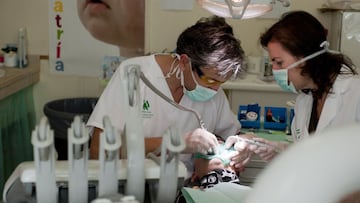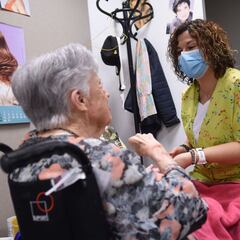Does Medicare cover dental?
The majority of seniors lack access to dental care as it is not covered by Medicare. However, through Medicare Part C, seniors have options...


At age sixty-five the majority of seniors in the US qualify to receive healthcare through Medicare. However, the coverage provided is basic and does not include dental, hearing or vision. To gain access to these services, once must purchase a Part C or Medicare Advantage Plan
What is Medicare Advantage?
Medicare Advantage Plans became available to Medicare members as "Part C" in the early 2000s. These plans allow insurers to sell dental, hearing, vision, and other perks and benefits to seniors, in addition to their standard Medicare benefits.
How many people are enrolled in a Medicare Advantage Plan?
Over the years these plans have increased in popularity. In 2021, around twenty-six million people had access to Medicare Advantage plans, up from twenty-four million the year prior. Over the last ten years the figure has more than doubled.
Sanders leads push to get dental, hearing and vision covered under traditional Medicare
Only around a third of Medicare members are enrolled in an Advantage plan, and for many the cost is a prohibiting factor. This means that the vast majority of seniors lack access to these services, which grow increasingly necessary as people age.
This fall when Congress was negotiating the Build Back Better bill, Senator Bernie Sanders had advocated that Medicare be expanded to cover all of these healthcare needs. While the bill has essentially no likelihood of passing in the near future, Sanders has continued his advocacy.
During speeches on the floor and in communities around the country he has continued to raise awareness and on social media has made a clear argument for expansion saying "It is not a luxury to be able to hear the world around you. It is not a luxury to keep teeth in your mouth. It is not a luxury to be able to see the people around you."
It is not a luxury to be able to hear the world around you.
— Bernie Sanders (@BernieSanders) February 17, 2022
It is not a luxury to keep teeth in your mouth.
It is not a luxury to be able to see the people around you.
Medicare can and must be expanded to cover hearing, dental, and vision care.
Related stories
Dental healthcare for not only seniors, but low income families, is a serious failure of the US healthcare system. In 2019, the Centers for Disease Control and Prevention (CDC) found that only around fifty percent of people between the ages of eighteen and sixty-four had access to dental care. The status for older Americans is extreamly concerning with the CDC reporting that "nearly 1 in 5 of adults aged 65 or older have lost all of their teeth" and more than ninety-six percent have at least one untreated cavity.
A new study finds 40% of low-income adults aged 20–64 years have untreated cavities and report having unmet #oralhealth care needs. Untreated cavities can cause pain, infection, and tooth loss if care is delayed. Find out more here: https://t.co/FNIdSX7Z98 pic.twitter.com/WYqrELeVWc
— CDCChronic (@CDCChronic) February 8, 2021
The CDC has also noted wide racial and economic disparities when it comes to oral health. The agency has noted that "older adults with less than a high school education have untreated cavities at nearly 3 times the rate of adults with at least some college education" and that "older non-Hispanic Black or Mexican American adults have 2 to 3 times the rate of untreated cavities as older non-Hispanic White adults."

